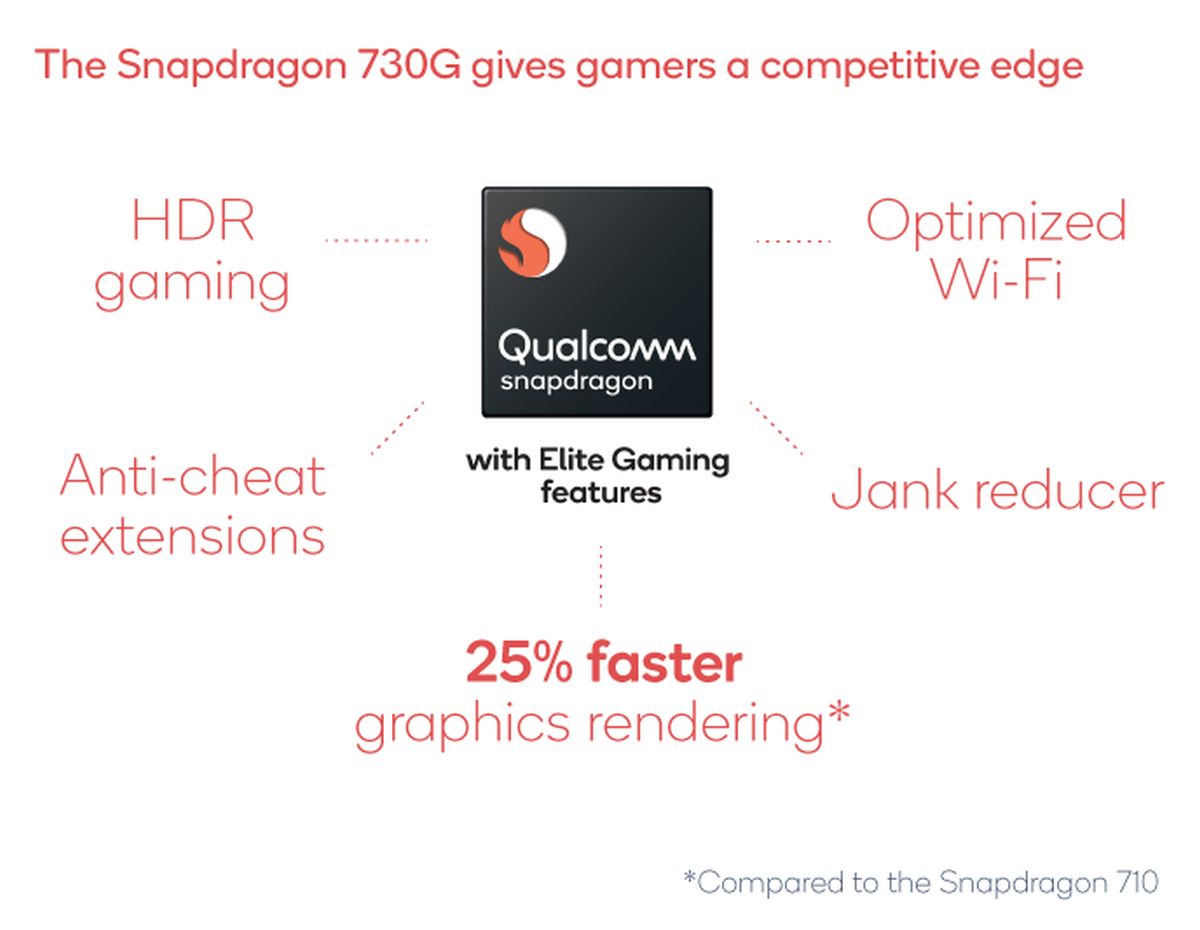For starters, the Snapdragon 730 is based on an 8nm die lithography and features an octa-core Kyro 470 CPU that operates at up to 2.2GHz. Paired with an Adreno 618 GPU, the SoC comes with a Hexagon 688 processor with Tensor accelerator for dedicated AI processing. It also features Qualcomm’s Spectra 350 Image Signal Processor supports up to dual cameras up to 22MP, and a single camera up to 192MP. The Spectra 350 includes a Computer Vision ISP which reduce power consumption. Other features include a Snapdragon X15 LTE modem and support for Wi-Fi 6.
Then there’s the Qualcomm’s gaming-centric version, the Snapdragon 730G. This particular SoC comes with several Snapdragon Elite Gaming features that are also available on the Snapdragon 855 SoC. The Adreno 618 GPU is clocked higher with support for Vulkan 1.1. Additionally, the chipset also supports smartphone with 1440p displays, and has the ability to record slow-motion video at 960fps.
Last but not least, the Snapdragon 665 SoC, a successor to the Snapdragon 660 SoC. Similar to the Snapdragon 675 SoC, the Snapdragon 665 SoC features an octa-core Kyro 260 CPU based on an 11nm process node. The Snapdragon 665 SoC is outfitted with an Adreno 610 GPU, Hexagon 686 DSP, Snapdragon X12 LTE modem and only supports Wi-Fi 5. The Spectra 165 ISP is able to support dual 16MP cameras or a single camera up to 48MP. Qualcomm says that commercial devices fitted with the Snapdragon 665 SoC, Snapdragon 730 SoC, and Snapdragon 730G SoC are expected to hit the market sometime during the middle of the year. (Source: The Verge, Qualcomm 1, 2, 3 // Image: Qualcomm)

